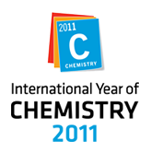
Welcome to Expedition Bolivia, an exciting trip to Bolivia's Salar de Uyuni during which students will be introduced to the wonderful world of chemistry. Chemistry professor Dr. George Agnes, representing Simon Fraser University, is thrilled to join on the i2P Expedition Team. During the expedition George will draw lessons from this unique environment to illustrate fundamental principles chemistry. On a daily basis the i2P team will conduct fascinating chemistry experiments that students following on-line can observe and replicate in their classrooms.
Experiment Quick Links:
- Life on the Salar » Report & Results
- Boiling Water: How do Environmental Conditions Affect the Temperature at Which a Pure Compound Boils? » Report & Results
- Solid Crust Formation on the Salar » Report & Results
- Carbonate/Bicarbonate Buffer » Report & Results
- Enrichment of Lithium » Report & Results
- Battery Demonstration
- Gummy Bear Combustion » Report & Results
- Burning of Lithium » Report & Results
- Geyser Experiment » Report & Results
1. LIFE ON THE SALAR
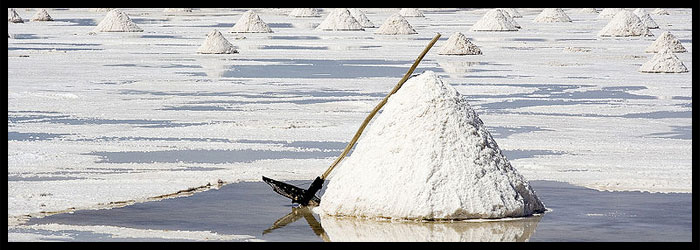
Date
Entire expedition
Purpose
Establish if there is life on the Salar
Discussion
It has been demonstrated that high salt concentration in soil can obstruct seed germination and impede the absorption of water and nutrients by plants. If so then the high salt content of the Salar de Uyuni may be toxic to plant life. To establish if the Salar can support life, salt/soil samples will be analyzed for DNA and RNA. Given that all known life forms contain DNA or RNA, finding these molecules in soil/salt samples will indicate that life can be supported in the Salar. This will demonstrate the remarkable capacity of life forms to adapt to a broad range of environmentally harsh conditions.
Method
Expedition members will collect samples of salt/soil at different locations along the running route. The location will be recorded by noting the longitude and latitude of each sample site. Samples will be returned to a laboratory in Vancouver, where they will be assessed for the presence of molecules indicative of life such as DNA and RNA.
Results
Report & Results Available Here
2. BOILING WATER: HOW DO ENVIRONMENTAL CONDITIONS AFFECT THE TEMPERATURE AT WHICH A PURE COMPOUND BOILS?

Date
May 13 - 15
Purpose
Demonstrate the effect of altitude (atmospheric pressure) on the boiling point temperature of water.
Discussion
The air is made of molecules that have a mass and weight. The force of gravity pulls all air molecules toward the planet. This force causes a downward pressure, termed atmospheric pressure. Atmospheric pressure is greatest at an altitude of 0 m. In moving to a higher elevation, there are fewer molecules above pushing down, and therefore the atmospheric pressure decreases. The general statement that follows is, atmospheric pressure decreases with increasing altitude.
Atmospheric pressure pushes down on all objects, including a pot of water. When introducing a heat source such as a burner on a stove or fire energizes water molecules in the pot, they can change state from liquid to gas (e.g. water vapor). The temperature at which a pure compound (e.g. water) is defined to be boiling, is the temperature at which that liquid's vapor pressure above the liquid is equal to atmospheric pressure. This means that a force that prevents a liquid from becoming a gas is the atmospheric pressure, and if the downward force of atmospheric pressure decreases it becomes easier for water molecules to be liberated as gas.
Method
The boiling point of pure water will be measured at several altitudes as the i2P team climbs into the Andes Mountains. Boiling point temperature will graphed against altitude.
Results
Report & Results Available Here
School Exercise
Boil water in your classroom and carefully measure the boiling temperature. What is the elevation of your community in meters? Compare your results to those noted on the expedition graph. What does this tell you about the atmospheric pressure where you live?
3. SOLID CRUST FORMATION ON THE SALAR
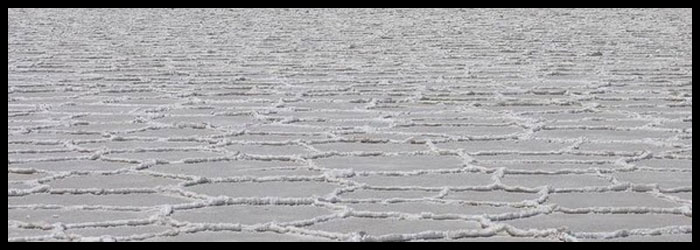
Date
May 15
Purpose
To determine why salt forms a solid crust on the Salar.
Discussion
The Salar de Uyuni is an ancient lake that is drying up and is covered with a crust of salt. During the i2P expedition to Bolivia Ryan Montgomery asked a very good question, ""if salt is heavier than water why is the Salar de Uyuni covered with a crust of salt. Why doesn't it sink?" The i2P chemistry team set about to find the answer to this question.
Results
Report & Results Available Here
4. CARBONATE/BICARBONATE BUFFER
Date
May 16
Purpose
Illustrate how a set of related compounds create a chemical system, termed a buffer, which is resistant to change in pH.
Discussion
At 12,000 feet the atmospheric pressure on the Salar de Uyuni is reduced, meaning the oxygen availability is decreased. The reduced oxygen will stress the youth ambassadors, and may cause a measurable change in their blood pH. pH is the scientific term for the acidity of a solution. Lemon juice, acetic acid (vinegar), and sulfuric acid (the acid in 'acid rain') are examples of acids. Hand soap is basic, and pure water that has been recently boiled is neutral. There is a range of acidity and basicity.
Many different sets of related compounds can be used as a pH buffer. A buffer consists of an acid and a base. The acid and the base can be related, in that the acid can donate a proton to the base, itself becoming the base and vice-versa. There are buffers in our blood and in the ocean. In the ocean, carbon in the forms of bicarbonate and carbonate form a buffer, which are connected to carbon, as carbon dioxide, in the atmosphere.
Let's first introduce where these compounds come from, by way of introducing the carbonate/bicarbonate buffer that is in the oceans. Carbonate (CO3-2) comes from the dissolution and weathering of organisms such as phytoplankton, corals, and rock. Carbonic acid, is produced when carbon dioxide (CO2(g)) reacts with water (H2)) to form carbonic acid (H2CO3). Because there is a large supply of carbonate, the carbonic acid readily loses a proton by reacting with carbonate, forming two equivalents of bicarbonate (H2CO3 + CO3-2 = 2HCO3-). This chemistry establishes a large reservoir of both carbonate and bicarbonate, and the relative amount of these two compounds (and their propensity to donate or receive a proton) determines the pH of the oceans. The ph of the oceans is currently 8.14. two hundred years ago, the pH of the oceans was 8.25, and the shift toward a lower pH is attributed to increased CO2 in the atmosphere from human use of petroleum over the past few hundred years.
Method
Youth Ambassadors will exercise strenuously which will cause them to produce more CO2. The CO2 in exhaled breath will be used to illustrate the acidification of pure water. Dyes, organic compounds that change color at different pHs, will be used as pH indicators. Then a series of carbonate/bicarbonate buffers will be prepared and used to illustrate pH buffering, by adding (a) exhaled breath and (b) a strong acid.
Results
Report & Results Available Here
5. ENRICHMENT OF LITHIUM
Date
May 17
Purpose
To enrich lithium from the Salar de Uyuni
Discussion
Another example of energy required on the expedition will be that needed to power cameras, cell-phones, and computers. A battery stores energy, and this energy is termed potential energy. One of the most common battery types used to power cell-phones and computers is the lithium battery. The Salar de Uyuni contains about half of the world's lithium reserves. Bolivia is considering mining these reserves for industrial purposes. The salts of the Salar are present as a solid that is the surface on which the i2P team is running and this solid layer is approximately 1 m in thickness. Below this layer is a 'brine', a concentrated sodium chloride solution.
Lithium in the Salar is not pure, but mixed with the commons salts of the Salar. Sodium, Lithium and Magnesium are the most abundant cations, while chloride is the most abundant anion. Pure lithium is needed by industry so isolating lithium from the other compounds is an important industrial reaction.
Method
Samples of the salt layer will be obtained and dissolved in water. Sodium carbonate is added then added. Because carbonate has a greater affinity toward Lithium than Sodium, lithium carbonate (Li2CO3) will be the first to interact and that compound will precipitate from the solution. The mixture can then be filtered to separate the Li2CO3 solid from the solution.
Results
Report & Results Available Here
6. BATTERY DEMONSTRATION
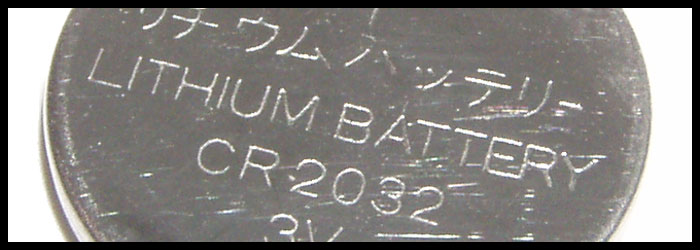
Date
May 18
Discussion
Running is a complex activity that requires the coordination of many muscles. A muscle contracts when it is stimulated by a nerve signal. A runner requires a web of nerves to be firing repetitively to coordinate the activity of running. Nerve signals are electric and use the unequal distribution of ions across their membrane to set in motion an electric current. A battery functions in a very similar manner. Batteries also harbor potential energy in the form of an unequal distribution of ions. The energy stored in a battery can be used to do work, just as the action potential of a nerve can stimulate the muscle to work.
In this experiment the energy from a battery to convert a compound from a low energy state to a compound in a higher energy state.
Method
Sodium chloride is a stable compound. A battery will be used as the source of energy to enable the conversion of chloride into chlorine gas. A sample of the salt from the Salar will be dissolved in water, and two electrodes will be immersed into the solution, and a test tube filled with water will then be introduced so that the electrode is immersed into the test tube. The battery will be connected to the electrodes, and electrolysis will follow.
Results
Coming Soon!
7. GUMMY BEAR COMBUSTION
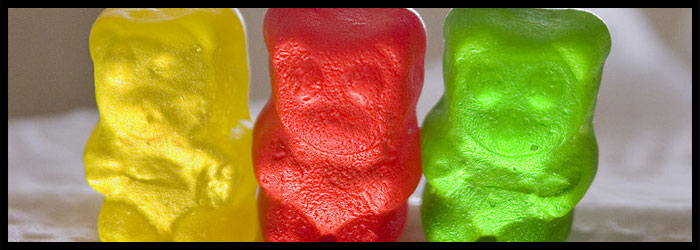
Date
May 19
Purpose
Illustration of the energy bound in the molecular bonds of a molecule - combustion of foods to CO2 and H2O
Discussion
In another series of reactions, the energy stored as foodstuffs that the youth ambassadors have been known to eat, gummy bears, will be demonstrated. Gummy bears are composed of sugars and other ingredients, and the though the energy released in our bodies is controlled by enzymatic reactions, Dr. Agnes will combust a gummy bear in a test tube in an uncontrolled reaction that is spectacular to watch and imagine the amount of energy released from one little gummy bear.
Method
Approximately 6 g of chlorate is placed in a test tube. The test tube is then introduced to a heat source, heating the chlorate until it has liquefied. A sample of a material, gummy bear, sugar, stone, wood, rice, etc. is then added to the test-tube. Record observations.
2NaClO3(l) = 2NaCl(l) + 3O2(g)
C12H22O11(s) + 3O2(g) = 9C(s) + 3CO2(g) + H2O + E
Results
Report & Results Available Here
8. BURNING OF LITHIUM
Date
May 20
Purpose
To illustrate the three essential ingredients needed for fire
Discussion
Fire requires three essential ingredients: oxygen, heat and a source of fuel. In chemical terms fire is the division of the molecules of fuel material (wood, paper, gas, etc.) into smaller molecules. This process involves a rapid sequence of chemical bond separation and formation. The high reactivity of an unstable oxygen molecule (O2) is needed to break existing molecules to form the new bonds of the products of fire. Heat is required to start and maintain the fire.
Many compounds burn including lithium. Lithium is used for many purposes, including as a component of fireworks, because it burns with a bright red glow.
Method
Lithium will serve as the fuel that will be combined with heat and a source of oxygen to burn.
Results
Report & Results Available Here
9. GEYSER EXPERIMENT
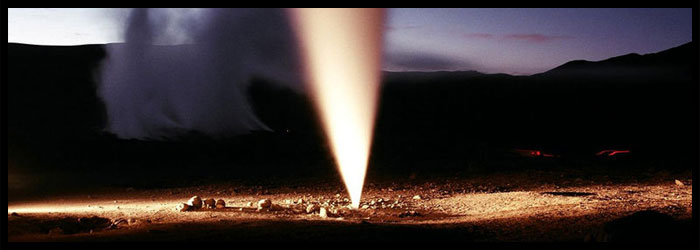
Date
May 21
Purpose
To demonstrate the chemical basis for the function of a geyser
Discussion
The Expedition Bolivia route takes the i2P team along the flanks of mountains, and past lakes, volcanoes, and geysers. Geysers release steam, water vapor, at intervals due to geothermal heating of water beneath the planet's surface. Depending on conditions, the steam released can be at an extremely elevated temperature. This experiment involves using the principles of chemistry to place compounds in a bottle that will mimic a volcanic eruption and a geyser.
Method
Introduce 3g MnOx to a 4L Erlenmeyer flask. Quickly yet carefully add 300 mL of 30% H2O2 solution. Repeat by introducing a small volume of soap, colored with a red food dye to the MnOx prior to introducing the peroxide. Record observations.
2H2O2(l) —(MnO)—› 2H2O(g) + O2(g)
Results
Report & Results Available Here



